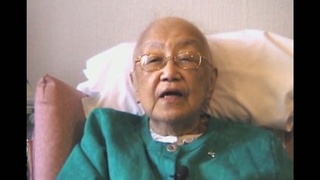Interviews
Coming to America
Always, I wanted to get out that small city, small town. Then my neighbor, right next door almost—one block—is a movie theatre. John Wayne and all those—pow, pow, pow—tough American cowboys. Without understanding English too much, but I enjoy story. Always the bad guy die [in the] end. Very simple story. So I thought all United States was a big country. So I wanted to come to [the] United States, too.
I*: Why San Francisco?
This is another story. Okay? My wife, I met my wife in Tokyo when I was [in] college doing the martial art. She is an American-born Japanese—third generation. She was going to Waseda University, International Department. Then, her major was photography. So accidentally, our practice was high interest. So she took my picture. We get to know each other. Then I wanted, I told her I wanted to come to the United States [for] a long time or, you know, Brazil. I couldn’t go because I have no farming experience. So her father died, but older brother become sponsor to get my visa. So I came to—not to San Francisco—Watsonville and strawberry pick, strawberry grove, with a Mexicano.
* "I" indicates an interviewer (Art Hansen).
Date: January 27, 2005
Location: California, US
Interviewer: Art Hansen, Sojin Kim
Contributed by: Watase Media Arts Center, Japanese American National Museum.












